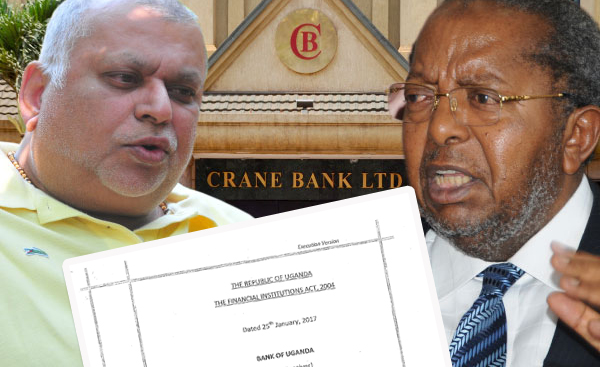By Spy Uganda
Earlier this week the Ugandans were dipped into sorrows after the sudden death of a celebrated industrialist Christopher Sembuya the co-owner of Sembule Group of Companies and its flagship factory, Sembule Steel Mills.
According to Sembuya’s widow Ritah Sembuya, the deceased suffered a cardiac arrest when he collapsed before noon on Tuesday, January 11, while sitting on the sofa at his Windsor Crescent home in Kololo.
READ ALSO: Industrialist Sembule Scoops Pan-African Pyramid Global Award

She said they immediately picked him up and rushed him to Kampala Hospital in Kololo, but unfortunately, he died at around midday.
“When we reached the hospital, the doctors immediately attended to him, but he did not survive the cardiac arrest. He died at the age of 85,” she said.

Sembuya Scooped Pan African Pyramid Global Award In 2019, Here Is Why.
Christopher Sembuya one of Uganda’s most industrious local investors scooped a Pan-African Pyramid Global Award for steering Uganda into an Industrious country for decades.
From humble beginnings in Idi Amin’s Uganda of 1971, two brothers; Christopher Columbus Sembuya and Henry Buwule founded a company; Sembule Steel Mills Ltd, formerly located in Nalukongo, a Kampala suburb. It later grew into The Sembule Group after it expanded and diversified into banking, electronics, construction, and trade in the 1980s.
Some of the older generations of Ugandans can find a quick link between Uganda Railways Corporation, Uganda Cooperative transport Union, DVD Engineering, and Bansel Engineering. These were some of their business partners.
Sembule Steel Mills started as a small hardware shop in Ndeeba, Rubaga registered on 11th February 1961. The shop had earlier been owned by his mother who let him put his franchise that included, Cement, Hoes, Slashers, and nails purchased from Indians that had been making them from Industrial Area.
In 1969, the young Christopher Sembuya born on 6th March 1936, asked his brother Wilberforce to join him and the two kicked off what would later become the most successful and enviable brand for three decades in the region. At the time they produced 1200 metric tonnes per year.
The first registered business name was Ndeeba Hardware, then later Sembule Industries registered on 19th February 1971 then Sembule steel mills Ltd in 1974 curved out of their surnames SEMBUYA and BUWULE-Sembule.
They bought a small piece of land measuring about half an acre for their residential houses but quickly turned it into a nail making factory starting with 1 nail machine that they nicknamed ‘NALONGO’ because it helped them earn a lot of money thus becoming a fully-fledged steel business.
Sembule steel mills went on to be the first company to manufacture steel products like Chainlink, barbed wire in 1974, Metal Lathe, welding electrodes among others in Uganda. The company enjoyed more than 80% of the market share.
On July 21st 1989, the two brothers, their executive at the time Steven Musoke, Emmanuel Katongole (now MD Quality Chemicals Luzira) and David Serebe gathered for a meeting where a crucial decision to enter the electronics business was made. ‘Sembule Electronics’ was registered in 1990 and mid the same year started operation by establishing its own production and the very first in Uganda, and accumulated technology. It pushed to produce and assemble telephone exchange, coloured TVs, Antennas, portable Radios, cassette Radio, Video Decks, among others. To make it simpler for you, Sembule was the first-ever and only Ugandan to assemble Radios, TVs, Antennas, etc. Sembule’s color TV made quite an impact.
The first time color came to the TV screens for Ugandans from Sembule it seemed like the whole world had changed because everyone wanted to have a piece of it. This was a technology where an additional ‘Kaveera or plastic’ film would be added on the front of the TV screen and it would change from Black and White to color. It’s Sembule who introduced that tech to Ugandans.
In addition, the remote-controlled TV sets seemed incredibly preposterous to Ugandans as family viewing was seen in a whole new light. Sembule introduced screen covers broadcasting 3 monochrome images, red, green, blue(RGB). The TV brands included Matendo, Spectra Angel, Pearl Special, Pearl Deluxe and Supra.
Sembuya Switches Radios From AM To FM
Today radio is one of the most popular methods of communication; a radio uses waves to catch and transmit signals which enable the listeners to hear what is airing. AM broadcasting amplified the signal received by the radio receiver. To increase clarity in messages, Sembule introduced FM radio sets which increased the clarity of audio messages being received. Its radio brand was Sembule Makula.
Sembule also introduced street lighting in Kampala and Uganda at large. This helped curb high rates of accidents at night and crime. They also set up the first bulb plant factory and after extensive investment and expansion of production lines, they became the regions’ largest consumer electronics company from phones to computers.
It’s no wonder that President Yoweri Museveni prided in Sembule so much that he took all his visiting Presidents during the 90s to see the eye-catching automated technology at Nalukolongo. He used Sembule before his visitors as a measure of how far the country’s economy had grown in terms of Industrialization.
Sembule’s Cables at International Television (CTV) started broadcasting in December 1992, becoming the first-ever private broadcasting station to be allowed by the government to go on Air. It was received with great enthusiasm and went into agreement with CNN to down-Link CNN’s signal and rebroadcast it locally. They had other relationships with Deusche Wella, MCM, among others.
On 30th January 1998, CTV merged with WBS TV and it was agreed that it was to surrender to WBS channel 9, Channel 25 with its Frequencies and 2 Satellite dishes.
Sembule Storms Banking Sector
Sembule Investment Bank undoubtedly became the biggest success story for a local Ugandan owned bank growing to become one of the most recognized, trusted Banks in Uganda.
Sembule Investment Bank later turned into Bank of Africa Uganda.
“We are deeply saddened by the recent loss of one of our founding pillars, who was a trailblazing pioneer and entrepreneur,” said the Bank. The Uganda Manufacturers Association (UMA) said they will miss a great industrialist and a founder member of the association who “championed the transformation of Uganda’s industrialization.”
“We have learnt, with profound sadness, of the passing on of a titan of industry, Mzee Christopher Sembuya, one half of the dynamic duo behind Sembule Group Ltd. The Group, at its peak, had interests in banking, steel, and consumer electronics. Rest well Mzee Sembuya,” said Daniel Birungi, UMA Executive Director.
RIP!








